10 Cool Rainwater Collection Systems
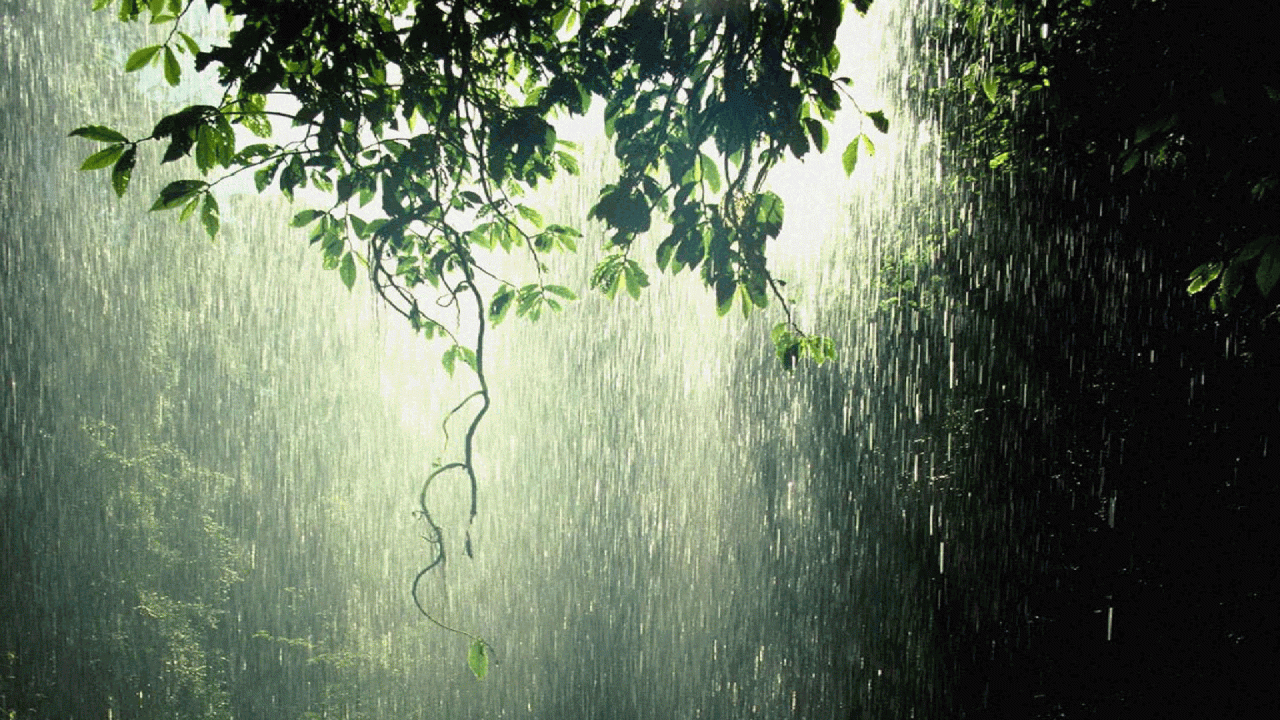
Setting up a rain water collection system at your home is a great way to conserve precious drinking water, as well as store additional water for gardens, pets and to have on hand in case of emergencies. There are hundreds of water storage units on the market, but I wanted to show you some of the cooler set-ups and more creative ways you can collect rain water for all of your water needs. For system plans and products, Amazon.com has an excellent selection of rainwater harvesting resources that will help you get up and running quickly.
Elevated Dual Barrel Gravity Fed
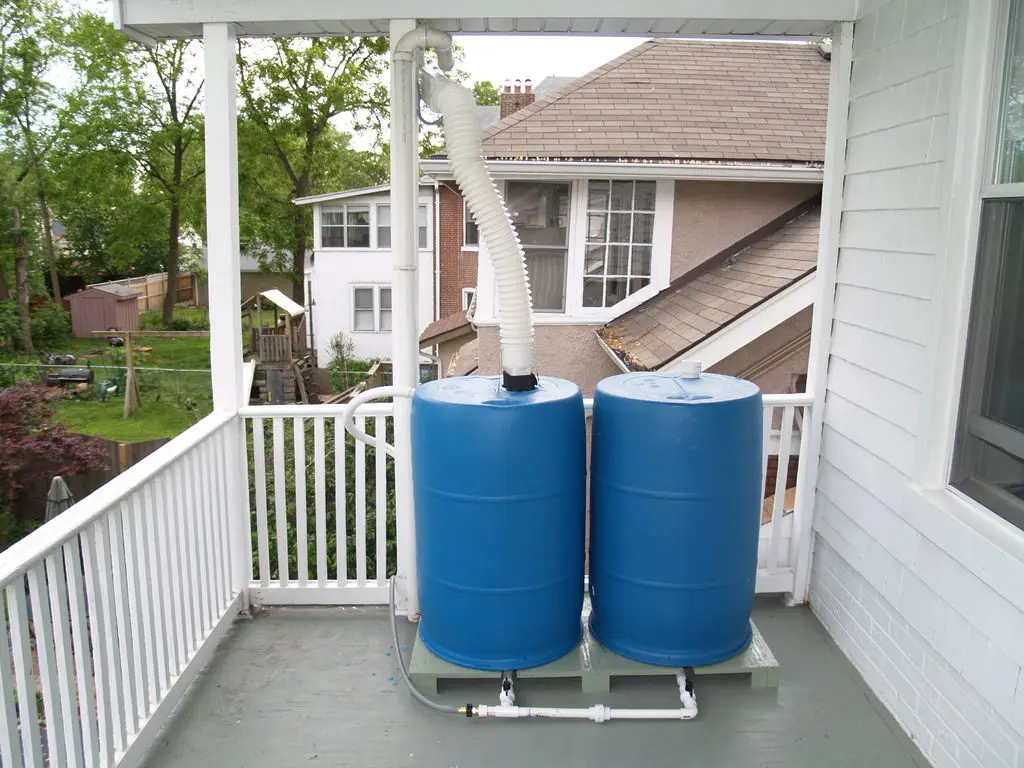
This is a nice simple set up that is connected directly to the rain gutter downspout. Each barrel has it's own valve for feeding the water down the line. This system will easily collect 100+ gallons per hour during steady rain.
Large Scale Water Harvesting
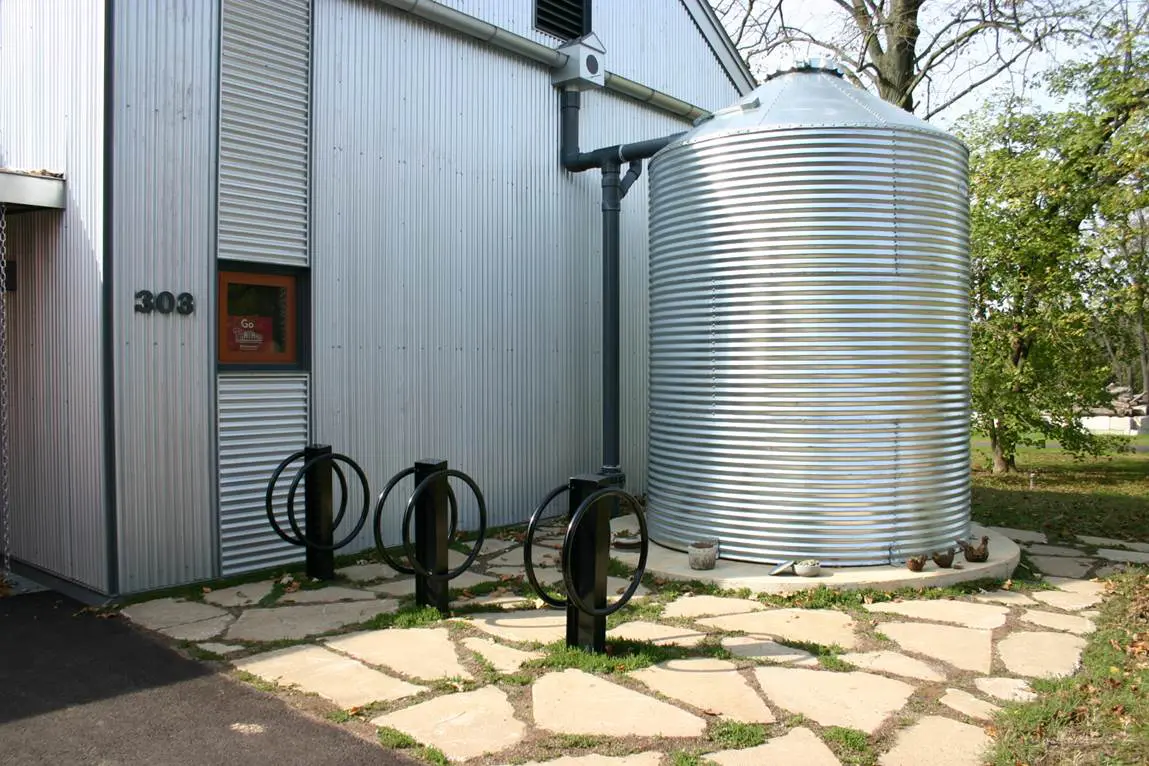
This level of rain water collection is going to be out of the league of most homeowners, but I really like how they have this cistern set up to collect from the roof watershed on a large scale. This system is being used for supplemental water at the University of Pennsylvania.
200 Gallon Daisy Chained Collection
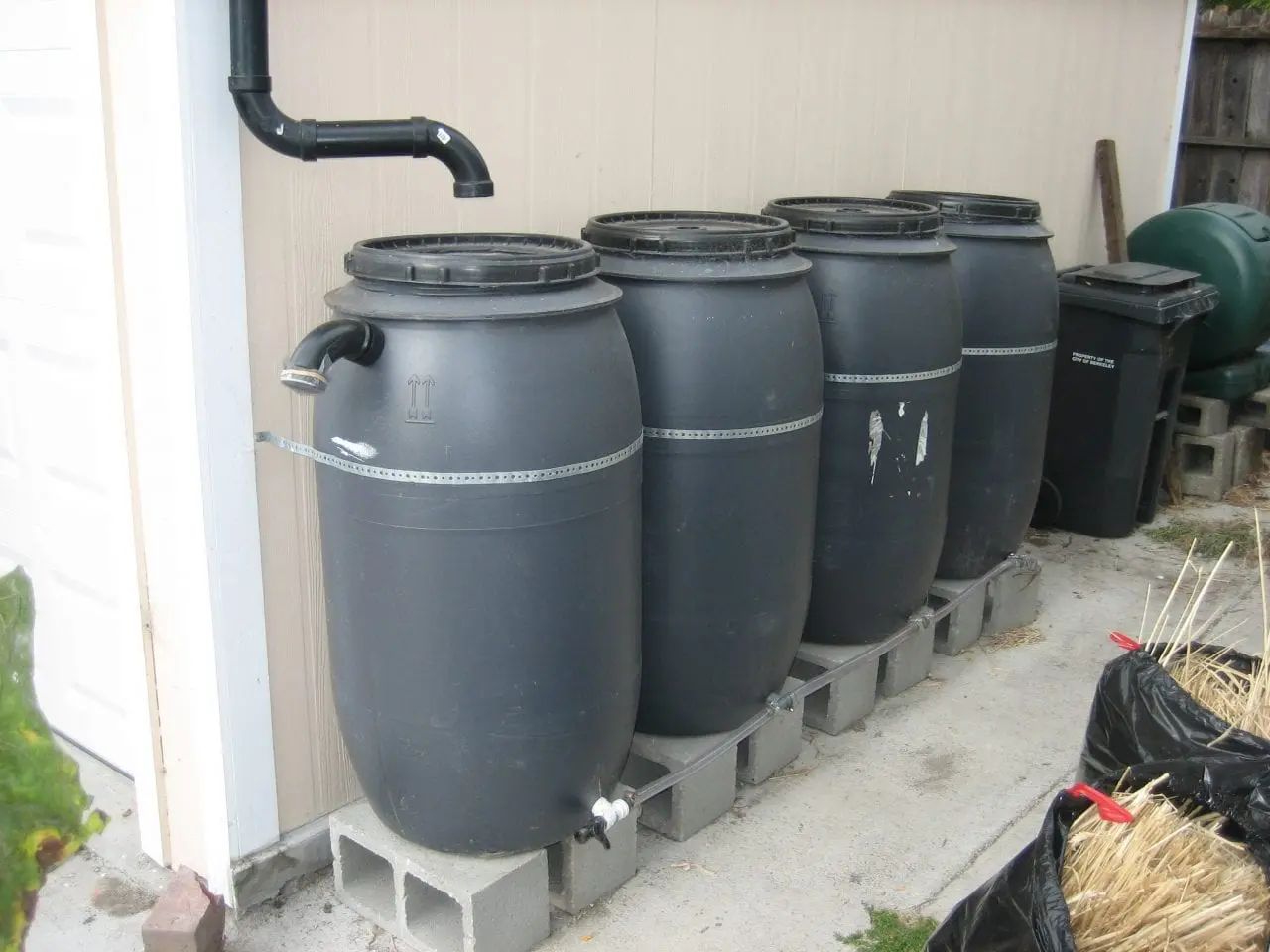
This is a very typical home collection system that can be put together rather inexpensively. This is most likely only being used for outdoor irrigation, but you can see how the barrels are elevated with cinder blocks so a bucket or container can be filled under the valve. This is also fed by the rain gutters.
500 Gallon Collection Old School Style
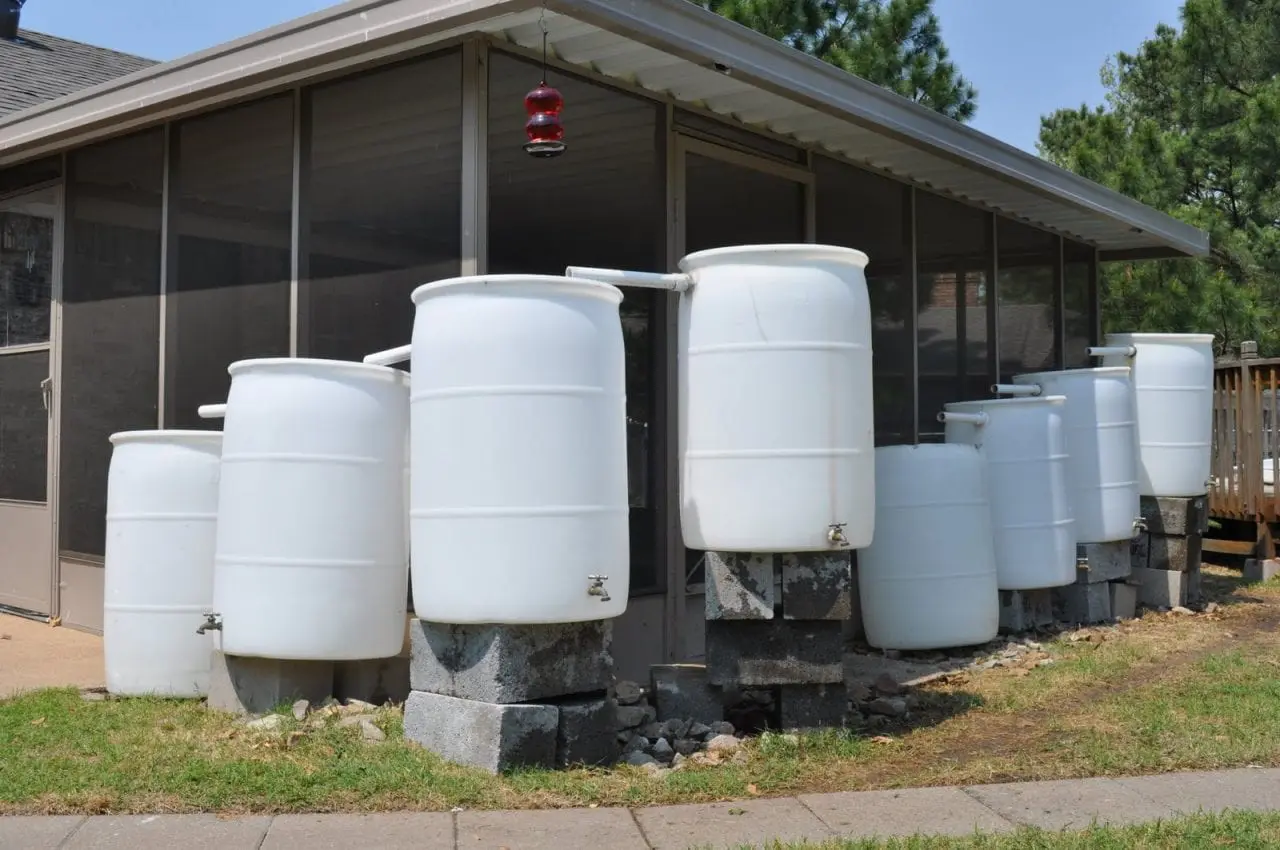
While I'm sure this setup is perfectly capable of collecting rainwater, I don't necessarily think this is the best way to do it. I wanted to show this, however, because it demonstrates some ingenuity and spirit. It looks like these barrels are set up under the eaves, and catch falling rain water directly, which isn't terribly efficient. They are also balanced on the cinder blocks (not very well I might add) which makes them a potential falling hazard as they fill. This could definitely be improved upon to collect water better and be safer too.
165 Gallon Stacked Barrel System
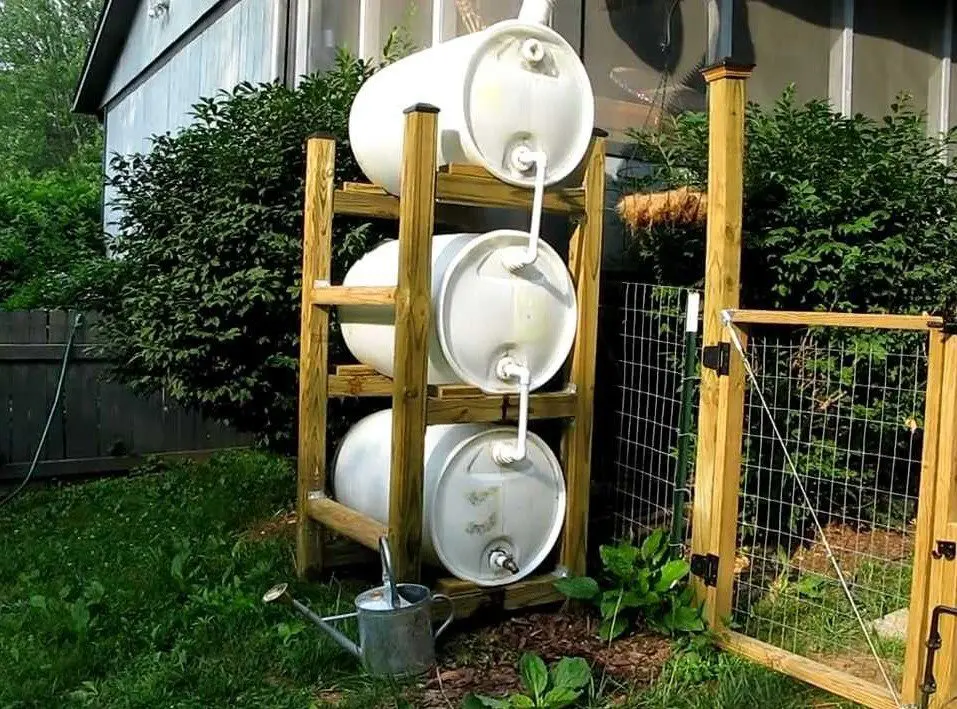
This is a very clean and efficient system using three 55 gallon barrels. The owner of this set up purchased the barrels for $15 each on CraigsList and connected them with 3/4 inch PVC pipe & fittings that you can purchase at any home improvement store. The stand was constructed out of pressure treated 4x4's and brackets. Water is fed from the house gutter system into the top barrel. A great harvesting system for under $100.
Portable Rain Water Collection System
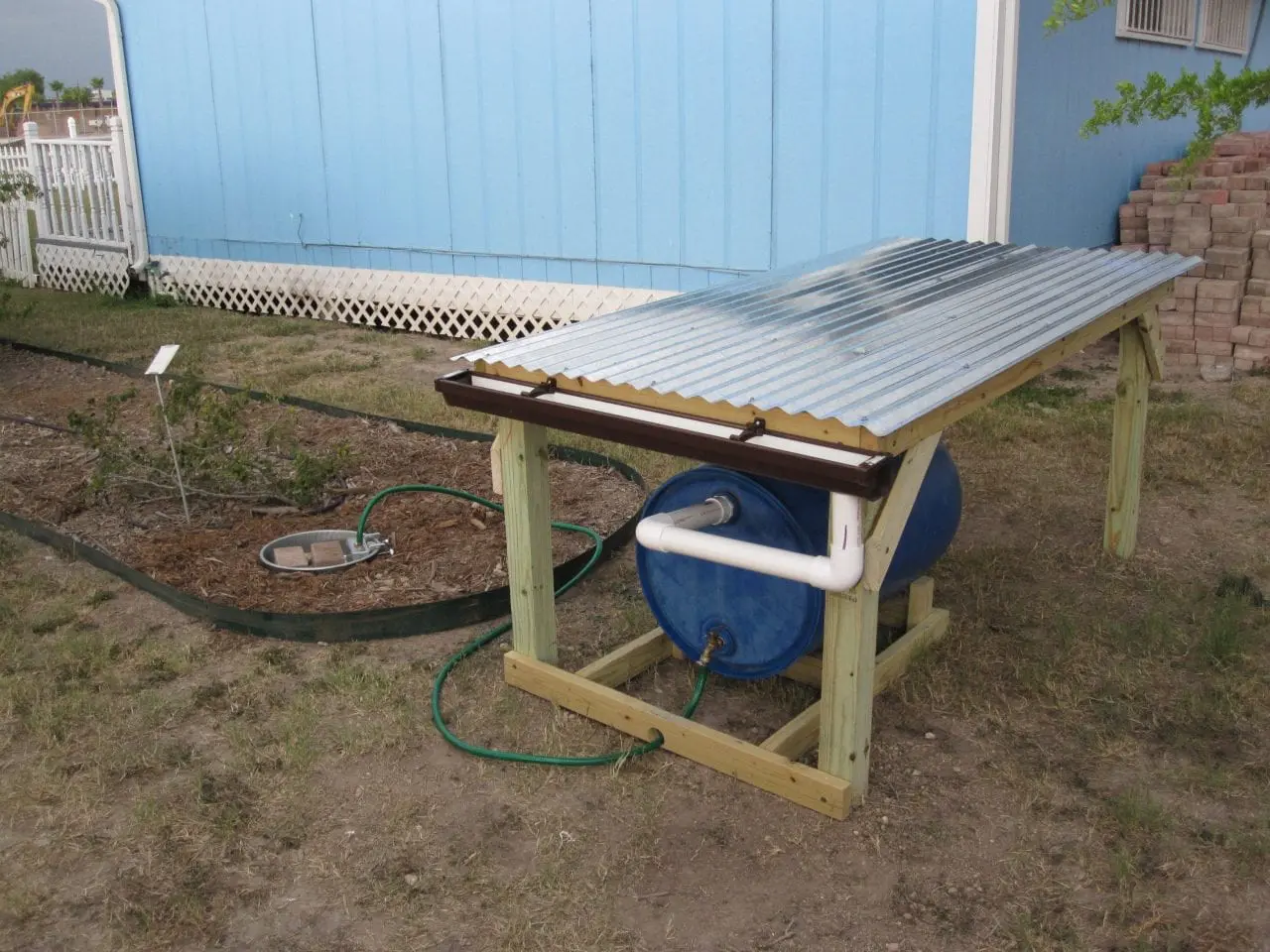
This is a really cool portable water harvesting system that can be built nearly anywhere you want to collect and distribute water. It's especially effective if you need to irrigate gardens that are not close to your home. It can also be used to store drinking water for animal or lifestock. Essentially a mini roof and gutter setup which drains into a 55 gallon barrel. This is one of my favorites, and something that nearly any homeowner could construct.
Trash Can Water Collection On The Cheap
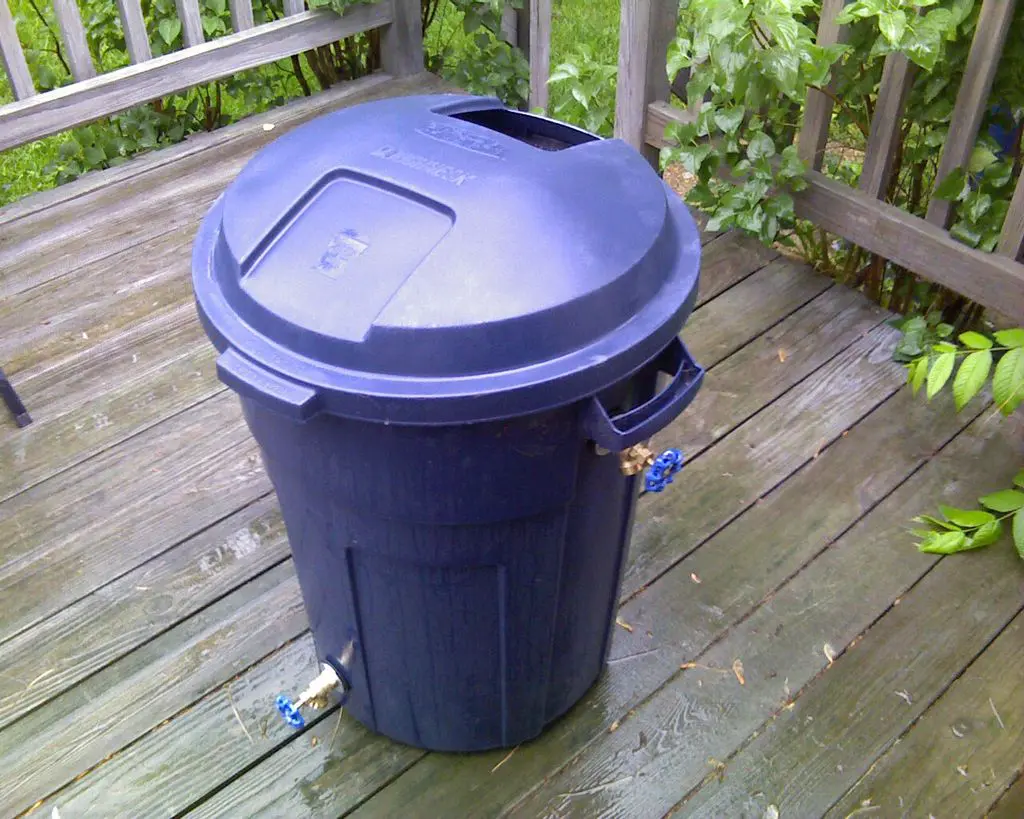
For about $20 bucks anyone can have a trash can rain water collection system like this. The owner of this can even installed a couple brass water valves to make filling watering cans or even a watering hose easier. A hole was cut in the lid so it can be located under a rain gutter downspout. Simple, effective & inexpensive.
Double Roof & Drain Collection System
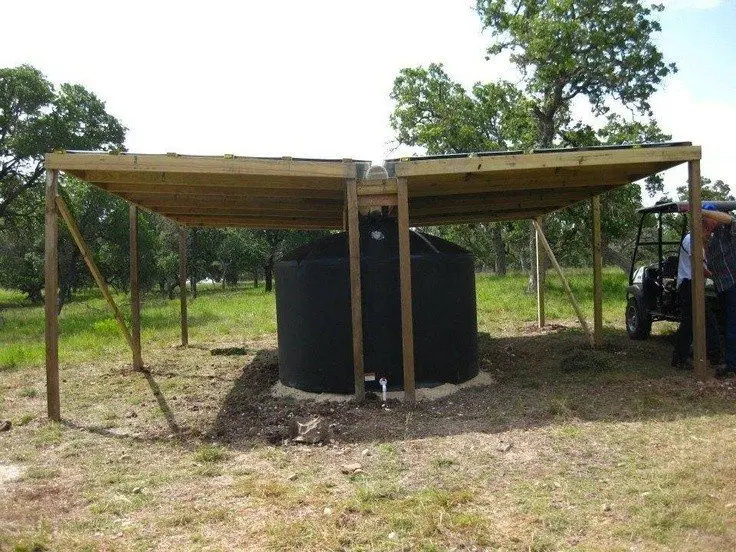
This stand alone harvester has two sloped roof panels which feed into a central trough. This feeds the main collection unit which appears to be over 1000 gallons. The large surface area of the roof provides a high volume of water collection. It appears that this unit is pumping water to other locations. A more expensive option, but if you have the space and resources, this is an excellent way to go.
Decorative Water Collection
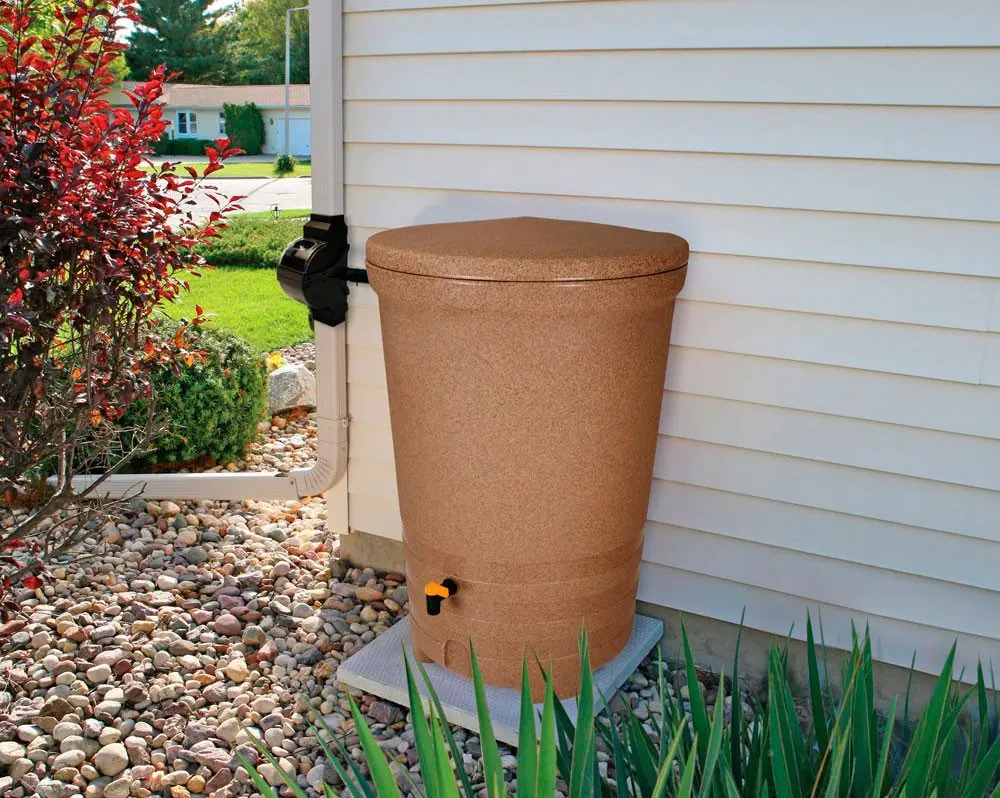
I can certainly understand that some of you might not like the look of a dozen 55 gallon collection barrels lined up on your back patio. Luckily there's a huge selection of decorative rain containers just like this one which combine form & function. This barrel has a stone finish and is fed by a down spout diverter.
Water Collection for Survival
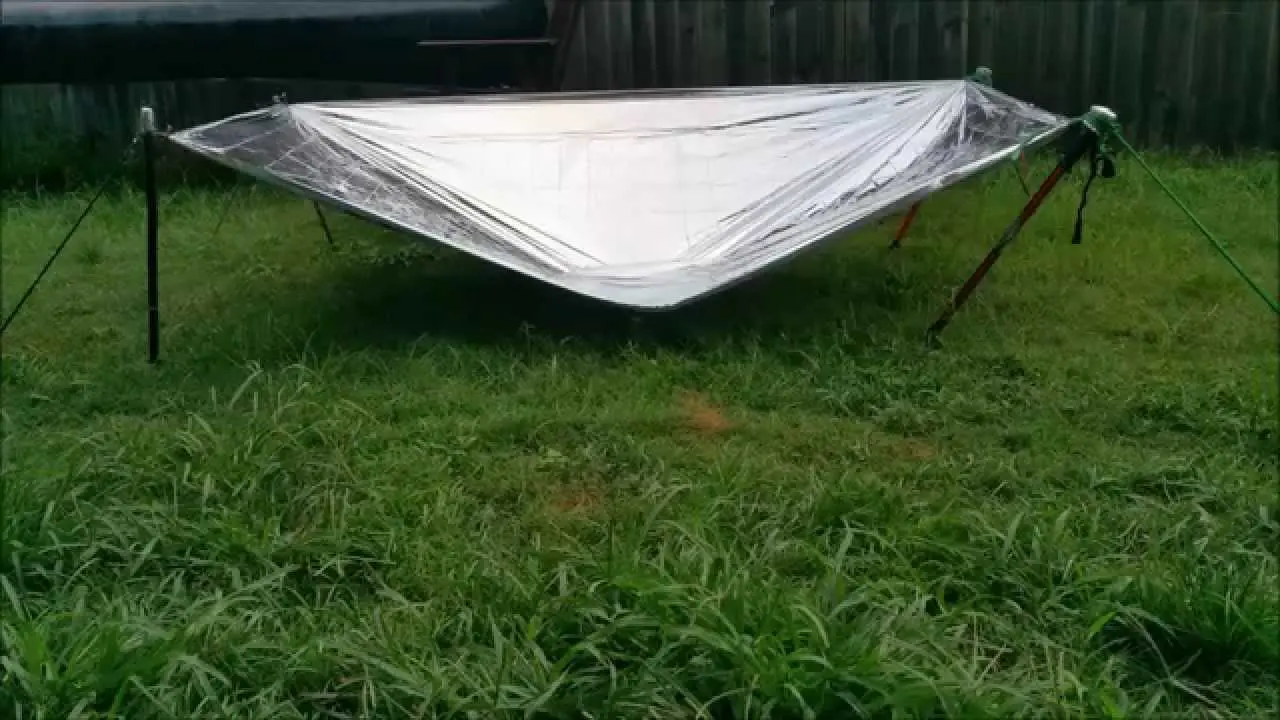
If you ever find yourself in a survival situation and are in need of drinking water, this method may be your best bet. With nothing more than a tarp, piece of nylon or fabric and a few poles or branches, you can set up a funnel that will collect rain with relative ease.
Rainwater Harvesting Tips
One of the main things to consider when installing any water collection system is will you be able to have it elevated enough for gravity to feed the water to where you need it? This includes outdoor gardens, plants & lawns, as well as for use indoors. If you plan on collecting extremely large volumes of rain water, you will more than likely need to set up a pump system to get the water where you need it, unless you can put the container on an elevated platform. For smaller residential uses, the rain barrel is the most popular way of collecting and storing water. These are portable containers that can be set up to collect water in several ways, but generally they are connected directly to your home’s rain gutter downspout where they can grab the most water in the shortest amount of time.
Keep in mind that collecting rainwater is not legal in some states. (I know, this makes absolutely no sense). So check your local laws before setting up your collection system. In some drought stricken areas such as California, local municipalities are actually offering rebates for homeowners who install rainwater collection systems.
Another thing to consider is the climate where your system will be installed. Colder climates will require you to bury your collection tank, as they will be likely to freeze and burst if left above ground in freezing temperatures. This means excavation costs and a more expensive tank which can be stored underground.
In warm climates you can easily build a platform for a gravity fed system, or install small pumps to send the water where you need it. Standard rain barrels will work fine as well, since there is no concern of freezing.
While most people will use their collected rainwater for outdoor use, you also have the ability to connect it to your home plumbing and use the rainwater for drinking, bathing etc. For this scenario, you will need to invest in a good filtration system. An inline filter/ purifier can remove almost all particulates, so your water is safe for consumption. At a bare minimum, you should install a reverse osmosis system at each sink where the rainwater will be plumbed. If you plan on using your collected water only for showers or laundry, purifying is not necessary. Just add a safe algaecide to your collection barrels regularly.
One other tip that many people forget to use is putting a screen/filter on your rain gutter downspout, to keep material and sediment from getting into your collection barrels at the source. This will go a long way to keeping your water fresh & clean from the start.


